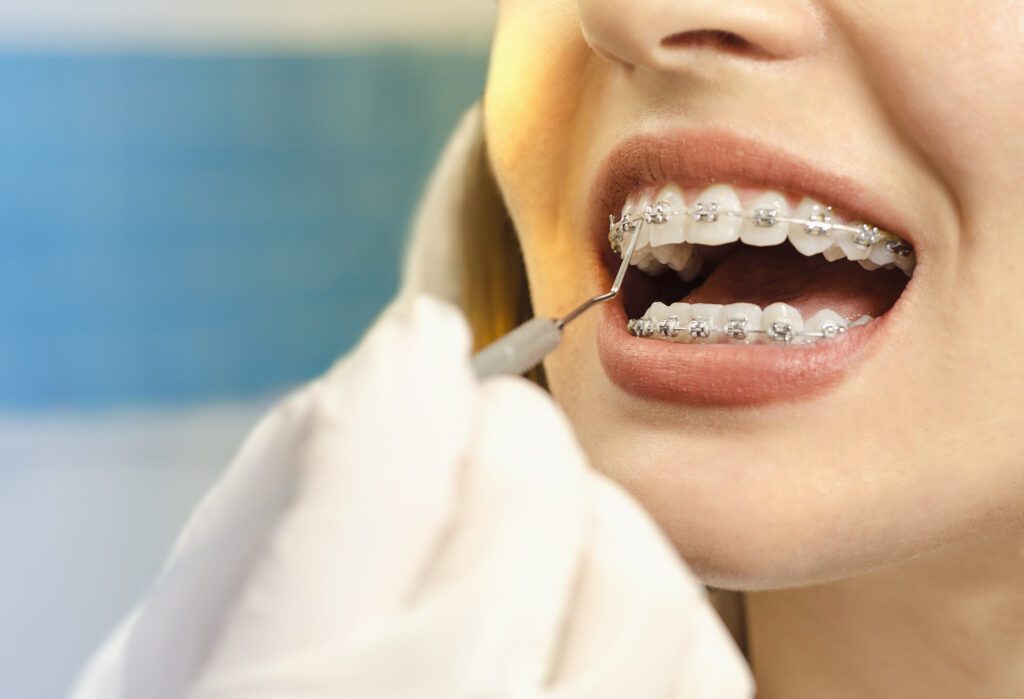Orthodontics is a process of providing long-term corrective services that will help correct mispositioned teeth and jaw. Dental treatments like traditional metal braces, Invisalign, and retainers create and maintain a straighter, more even smile.
If you have some teeth that are out of place, come in today to talk to your dentist about solutions for getting a smile that will last a lifetime! We provide orthodontic services to patients in our Ardmore and Madill, OK dental offices. We also provide comprehensive dental services for our new and existing patients.


The Purpose of Orthodontic Treatment
There are many reasons why a dentist may suggest orthodontic treatment. Braces or aligner therapy can improve the alignment and function of your teeth and jaw. Doing this can enhance your oral health, aesthetics, and overall well-being.
Many patients seek out orthodontics to improve the appearance of their smile. It can fix teeth that are crooked, crowded, or improperly spaced. Correcting misalignment can significantly improve self-confidence and social interactions.
Misaligned teeth are difficult to clean, increasing your risk of tooth decay, gum disease, and tooth loss. Patients with straight teeth floss in between their teeth and brush more effectively. Orthodontic treatment will straighten your teeth, reducing the likelihood of cavities and periodontal disease.
Orthodontic treatments can also address bite issues. We can correct an overbite, underbite, crossbite, or open bite with clear aligners or braces. This will ensure your upper and lower teeth make proper contact reducing your chances of uneven wear on teeth and stress on jaw joints. A proper bite also ensures proper chewing and speaking patterns.
Orthodontics in Southern Oklahoma
We offer orthodontic treatments that can help patients with mild to moderately crooked or misaligned teeth. Our orthodontic treatments can include:
Invisalign
Invisalign is an orthodontic treatment that straightens teeth using a series of removable aligners. This is an alternative to wearing traditional metal braces. These aligners are made of clear plastic and are virtually invisible. This makes Invisalign a discreet treatment, unlike traditional braces.
Invisalign works by gradually shifting teeth into their desired position. Every one to two weeks, you will switch out your aligners for a new set of customs aligners. Each new set will make a slight adjustment to your teeth’s position.
Removable Invisalign aligners allow patients to eat without restrictions and brush and floss their teeth. Treatment can range from 6 to 18 months. Invisalign is suitable for treating various dental issues, including crowding, spacing, and certain bite irregularities. To find out if you are an Invisalign candidate, see Invisalign.
Traditional Braces
Traditional braces are orthodontic devices we use to correct dental issues such as crooked teeth, crowding, gaps, overbites, underbites, and other bite problems. Braces gradually coax your teeth into a healthy alignment and give you a perfect, beautiful smile.
We often recommend traditional metal braces for patients who need more intensive orthodontic treatment than Invisalign. Braces are also beneficial for younger patients.
Traditional braces consist of brackets that your dentist will bond to each tooth. Then, they will connect an archwire to each bracket which will apply pressure to each tooth. The pressure will move the teeth into the proper position. To learn more about the getting braces put on your teeth, see Traditional Braces.
Retainers
Retainers are orthodontic devices that will keep teeth in place after an orthodontic treatment. We offer several types of retainers to accommodate the needs of all our patients. After orthodontic treatment, teeth can shift into their original position over time.
You will need to wear your retainer every night or when your dentist tells you to. It will help stabilize your teeth in their new position while the surrounding bone and gum tissues adjust. It is crucial to follow the advice of your dentist to maintain your orthodontic treatment results.
Patients who forget to wear their retainers can experience orthodontic relapse. Wearing a retainer will ensure the time, effort, and investment put into straightening your teeth provide long-lasting benefits.
Request an Orthodontic Consultation Today with Storts Family Dentistry in Southern OK
Are you interested in orthodontic treatment for your child or yourself? Call Storts Family Dentistry at (580) 260-3410 or request a dental appointment with us online.
Our dentists are open to serving patients with their orthodontic expertise in many cities in the Southern Oklahoma area, including Ardmore, Marietta, Madill, Thackerville, Springer, Wilson, Mannsville, Kingston, and countless other areas! If you have teeth out of place, come in to talk to one of our dentists about solutions for creating a smile that will last a lifetime and boost your confidence!
